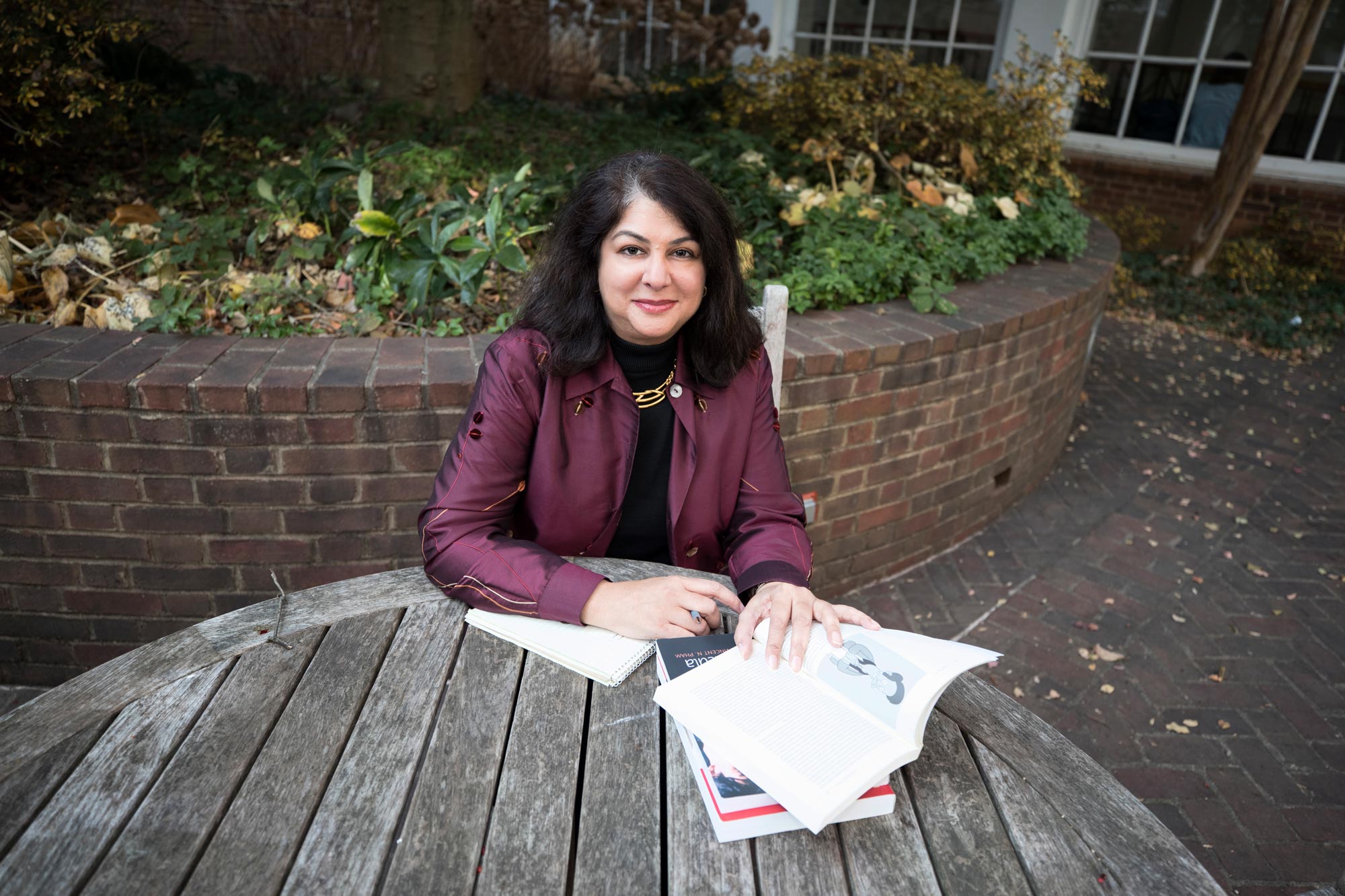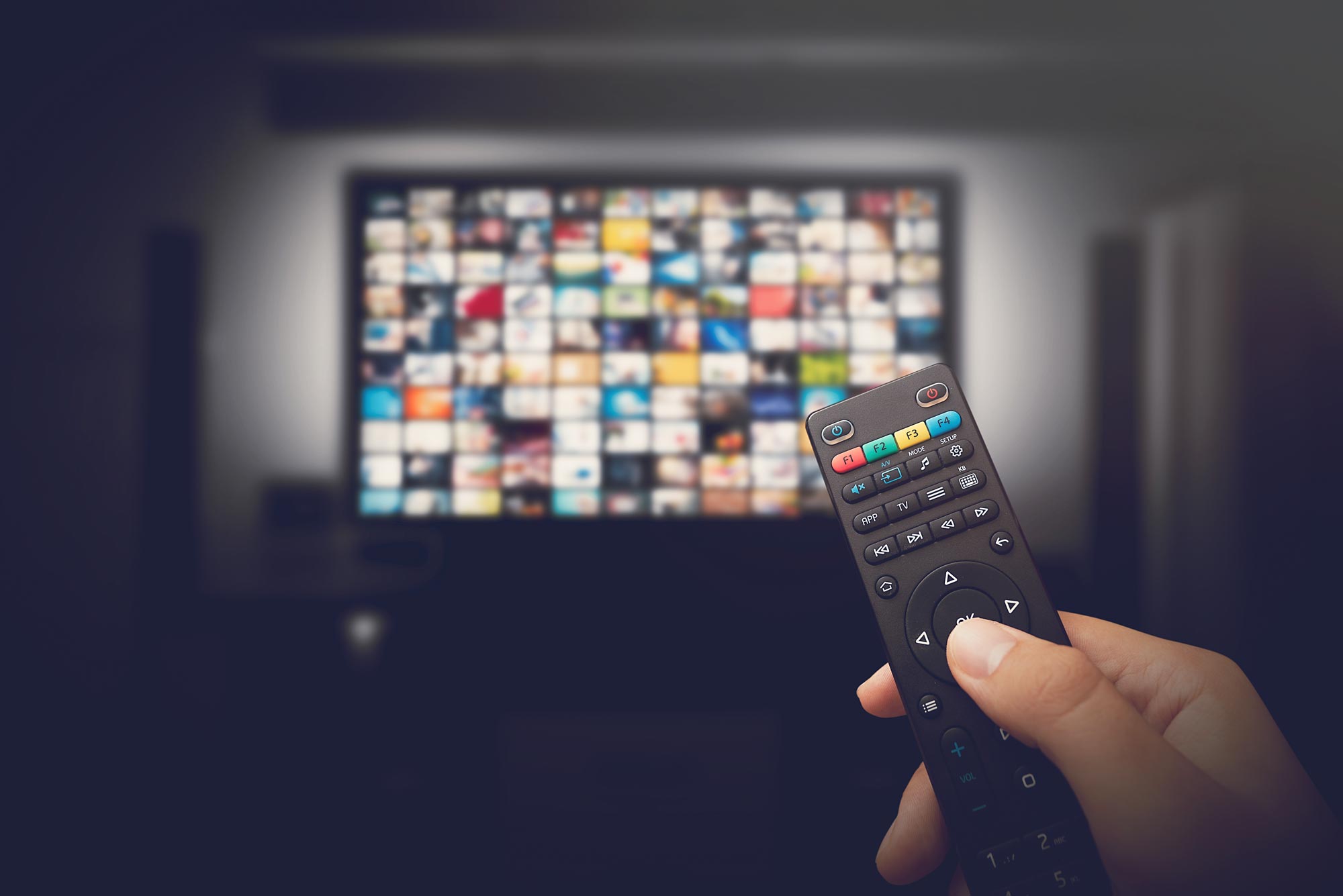Shilpa Davé grew up watching the re-releases of a number of 1950s-era Disney films. One that particularly resonated with her was “The Jungle Book,” which is about an orphan lost in the Indian jungle and raised by wolves.
Today, the University of Virginia assistant dean and media studies assistant professor sees the film much differently than she did as a young girl.
“It’s another way of reinforcing British norms about the colonist/native relations,” Davé said, “and in the end, the man-child, or the British citizen, cannot live among the animals, which are a stand in for the non-English populations in the British Empire, such as in India and Africa.”
Really, that’s just one of the things that Davé – author of the book “Indian Accents: Brown Voice and Racial Performance in American Television and Film” – considers “problematic” with the film.
“And yet, the film has been remade and the story retold over and over again,” she said.
Despite the film’s issues with representations, Davé still enjoys watching it – and others like it – with younger family members.
“We talk about how these are stories that work to show different ways of depicting themes of love, family, history and ancestry,” she said.
But not all past Disney productions have enough positives to outweigh the negatives.
It is for that reason that when Disney Plus launched in November, it elected not to make some of its content available. In other cases, the video streaming service uses disclaimers at the start of films, such as “might contain outdated cultural depictions.”
The opinions on how Disney has handled the issue have run the gamut. UVA Today caught up with Davé for her take.
Q. “Song of the South” is one film that Disney Plus has elected to not make available, presumably for its views of plantations. But some African Americans have said they wish it would be released so that there could be more dialogue about how the movie came to be. What’s your opinion on this, and how do you think Disney arrived at the decision to shelve it?
A. There’s a lot that has been discussed with 1946’s “Song of the South.” It has not been part of the Disney re-releases since the 1980s, and has not been released for mass distribution. It is a film that supports racism and the nostalgia for plantation culture after the Civil War, just like “Gone With the Wind” and “The Birth of a Nation.” It is also one of the only Disney films that is about Reconstruction and so I think it should be made available as a historical record and for all of us to study and see.
Even though the film is not in circulation, the Academy Award-winning song, “Zip-a-Dee-Doo-Dah” is a mainstay in popular culture and understanding the context of the song might also make us rethink using it. There’s a great podcast, “You Must Remember This,” that devotes six episodes to the history of “Song of the South.”

Shilpa Davé is excited to see the re-make of “Mulan.” (Photo by Dan Addison, University Communications)
Q. I watched the original version of “Pocahontas” with my children recently and we all really enjoyed it, but there were definitely some cringe-worthy moments involving insensitivity to Native Americans. Do you have any advice for parents about what they can say to their children when situations like that present themselves?
A. It’s great to watch with the kids and also to remember that what we as adults find “cringe-worthy” may not register with smaller kids. I find it useful to talk with kids and ask what they are seeing. The song “Savages” in the 1995 Pocahontas is particularly problematic because it is saying that the Powhatan tribal nation and Algonquian communities had the same feelings of violence and fear as the settlers, and that was not necessarily the case.
In one sense, it’s about two different groups not getting along, but historically, as adults we know these groups have not been treated or represented equally or with respect to cultural nuance and difference. Adults see the multiple layers of these stories. With older kids, we can reach for supplemental material and point out the complex relations and histories, but those initial impressions have already been formed, so it’s about talking about how we know more now.
Irene Bedard, a Native American actress, is the model and voice for Pocahontas and so there’s been some progress, as the film is a step up from the representations in the 1955 “Peter Pan” where the Indians rarely speak or speak in broken English. “Frozen 2” (made in 2019) did consult with indigenous peoples (the Sámi people in Scandinavia) to include music and cultural references when Elsa and Anna meet with the Northuldra tribe in the film.
Q. In some of its films it makes available, Disney Plus uses disclaimers announcing that a film might contain “outdated cultural depictions.” But then other films don’t have any disclaimers. This seems like a slippery slope. Some people feel like the wording in these disclaimers is dismissive. Is there anything that should be done to address that?
A. My question is who decides which films get a disclaimer and which do not. Shouldn’t all films be viewed as a product of their historical times and be read as a reflection of the nation and the culture’s values?
What I look at is who is the creative team behind the film, what did the reviews say at the time it came out and how does that relate to where we are now?
Q. In the Disney Plus remake of “Lady and the Tramp,” the Siamese cat song – deemed by many to be racially offensive – has been replaced. Is this an example of proactive things Disney Plus can do in the future? Putting yourself in the shoes of Disney Plus, are there any long-term solutions in terms of deciding what programming is insensitive and what isn’t?
A. What ethical and cultural expectations should we have of corporations when profit is key for them? There are a lot of Disney remakes being released because the older stories are familiar and nostalgic to adults and they want to introduce their children or young people in their life to the stories they loved as children. The new films also make Disney culturally and socially relevant for the times and new audiences, but they make money. Disney is a for-profit corporation and they are interested in maintaining their brand as family-friendly and as an innovator in animated films, but they also are interested in maintaining their profit margins.
Sometimes it may be that they will replace scenes from older films, such as the Siamese cat song from “Lady and the Tramp,” and instead create characters who are mischievous with no particular racialized or ethnic characteristics and then introduce the film’s human characters as a multi-racial family in New Orleans who happen to see an Asian American physician. With “The Lion King,” the company hired a creative team that was primarily African and African American, but with “The Jungle Book,” it was a repeat of the same story.
The future, I think, is about creative new stories and visions for Disney. The successful new films are bringing in directors, writers, animators, musicians and stories from a diverse group of people, and they have been critically acclaimed and profitable. Some of my favorites have been “Coco,” “Moana,” the Pixar shorts like “Sanjay’s Super Team” and “Bao,” and I am particularly excited to see the remake of “Mulan.”
Disney Plus is a combination of Disney, Marvel and Star Wars, and many of the new projects are geared toward telling more racially diverse stories with a global emphasis.
Media Contact
Article Information
January 30, 2020
/content/qa-disney-plus-wrestles-cultural-depictions-its-content

